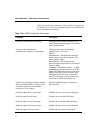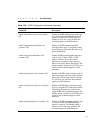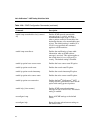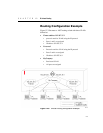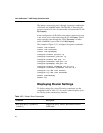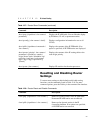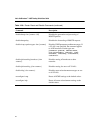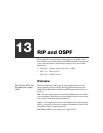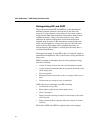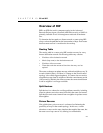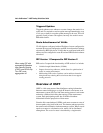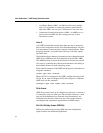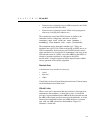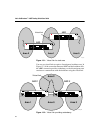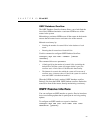
224
Intel
®
NetStructure™ 480T Routing Switch User Guide
Distinguishing RIP and OSPF
The distinction between RIP and OSPF lies in the fundamental
differences between distance-vector protocols and link-state
protocols. Using a distance-vector protocol, each router creates a
unique routing table from summarized information obtained from
neighboring routers. Using a link-state protocol, every router
maintains an identical routing table created from information
obtained from all routers in the autonomous system. Each router
builds a shortest path tree, using itself as the root. The link-state
protocol ensures that updates sent to neighboring routers are
acknowledged by the neighbors, verifying that all routers have a
consistent network map.
The biggest advantage of using RIP is that it is relatively simple to
understand and implement, and it is the de facto routing standard for
many years.
RIP has a number of limitations that can cause problems in large
networks, including:
• A limit of 15 hops between the source and destination networks
• A large amount of bandwidth taken up by periodic broadcasts of the
entire routing table
• Slow convergence
• Routing decisions based on hop count; no concept of link costs or
delay
• Flat networks; no concept of areas or boundaries
OSPF offers many advantages over RIP, including:
• No limitation on hop count
• Route updates multicast only when changes occur
• Faster convergence
• Support for load balancing to multiple routers based on the actual
cost of the link
• Support for hierarchical topologies where the network is divided
into areas
The details of RIP and OSPF are explained later in this chapter.



